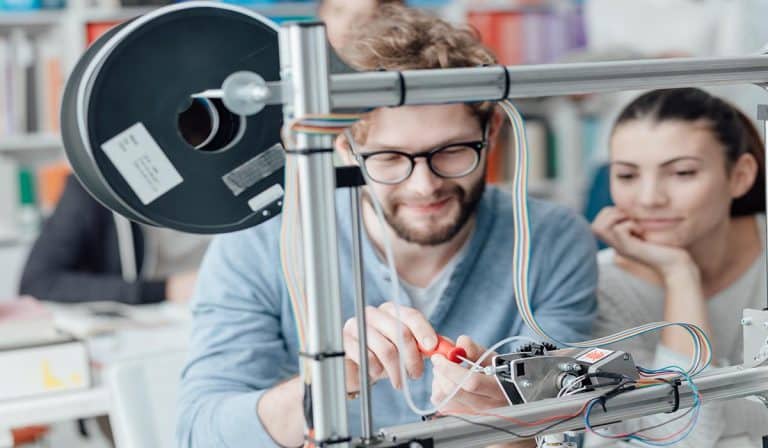The Fourth Industrial Revolution or Industry 4.0 is expected to hit a one-trillion-dollar valuation by 2025. Its growth is driven by the efficiencies it unlocks and the greater productivity it can create. We’re already starting to see autonomous warehouses where robots move the material while sensors proliferate the factory, gathering data for analysis. A host of startups are working to apply these technologies to the manufacturing world. Here’s what manufacturing will look like in the future.
Contents
The Proliferation of Unique Items
Manufacturers will have to contend with the near opposite of a mass market. Customers are constantly asking for more personalization options and customized items while expecting to pay the same price as mass-produced goods.
We will eventually see more manufacturers expanding their customization options while relying on conventional mass production to supply that inventory. Another approach is blurring the line between consumer and producer, allowing customers to design their own product and send it to the manufacturer to be made. 3D printing dovetails into this trend neatly. This is separate from the growth of more diverse product lines to make items that fit the needs of various customer segments because mass production is rarely good enough anymore.
The Increasing Specialization of Manufacturers
Manufacturers are under intense pressure to cut costs and meet customers’ ever-higher expectations. This will push more manufacturers to focus on what they do best, manufacturing.
Manufacturers are increasingly outsourcing their back office, warehouse operations, and logistics to third-parties. They may still make items, but they’re more likely to partner with specialists to create prototypes or make subassemblies that go into their final product. Others have shifted to pure design work. They create designs that others manufacture, or they may rely on contract manufacturers to make the products they sell. Others specialize in accepting customers’ models and making prototypes or small production lots that large manufacturers won’t touch.
Large manufacturers often hire these firms so that they can speed up the prototyping process and get new products to market faster. Working with overseas firms will also become the norm as remote project management and communication between cross-functional teams will become easier.
Firms like RapidDirect can already create a finished product and send them to you in a matter of days with nothing but an email file. They can dispatch hundreds of CNC machines, 3D printers and other machines to make small batches of unique items or complex parts that your company lacks the equipment to make. This allows manufacturers to dramatically reduce their product development costs. If you want to learn more, RapidDirect have information on prototyping methods and which one would be the best one depending on your specifications.
The Evolving Supply Chain
The sheer variety of customer orders means manufacturers are increasingly building to order rather than building to stock. This reduces its inventory management costs. It reduces the risk that they’ll waste money making inventory no one wants. And intermediaries that make money by holding inventory such as warehouses are less valuable, though those that process orders and do the shipping for you can remain in business. That’s often done simply to be able to meet customers’ demand for near-instant deliveries. Costs are kept down through increasing automation, though nearly 100 percent automation in warehouses is possible.
The supply chain has become increasingly global. Companies order parts from all over the world, and the internet makes it possible to outsource services from tech support to customer service to third-parties all over the world. Or they can bring in experts to secure their IoT infrastructure and fine-tune production lines.
The Evolution of Product Design
Additive manufacturing has made it possible to create far more complex designs. This allows engineers to design consolidated parts, parts that serve several purposes simultaneously.
There are several reasons to do this. One is to reduce the number of parts in the final product, often reducing its weight while reducing the number of potential failure points. Another reason is environmental. If you can combine several parts into one, you typically need less material to make the final product. It is typically lighter, too, reducing transportation costs and energy or fuel requirements for the end-user. This is best demonstrated by consolidated jet engine parts that weigh 20 to 30 percent less while being far stronger than conventional airplane parts.
Tools like augmented reality and virtual reality will also have a profound impact on product design. Manufacturers will be able to run accurate simulations using live conditions to catch potential issues before a prototype is sent for production. AR could also be used to allow different teams at different sides of the globe to troubleshoot issues together in real-time.
Conclusion
While we don’t yet have fully automated and instantaneous manufacturing, the manufacturing world is seeing rapid change on all fronts. This is altering the business model for many firms and forcing others to adopt new technologies just to stay in business.

